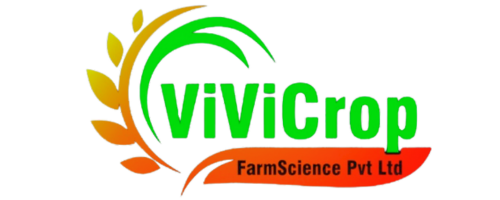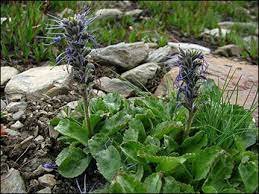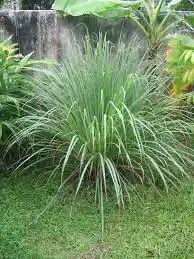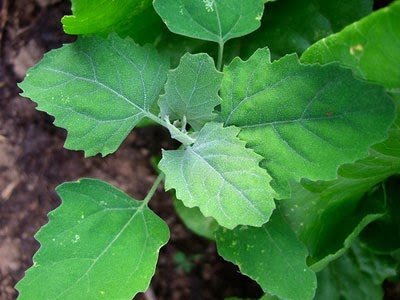Bougainvillea Nutrition Requirements
Nutrition required by Bougainvillea at each stage of its life cycle.
SOIL PREPARATION

Soil Preparation
Soil preparation is crucial for the healthy growth of Bougainvillea plants.
Here's the soil preparation method and nutrition requirements for Bougainvillea at the soil preparation stage:
### Soil Preparation Method:
1. **Site Selection**:
- Choose a well-drained location with full sunlight exposure for planting Bougainvillea.
- Ensure the area has good air circulation to prevent fungal diseases.
2. **Soil Testing**:
- Conduct a soil test to determine the pH level and nutrient content of the soil.
- Bougainvillea prefers slightly acidic to neutral soil with a pH range of 5.5 to 7.0.
3. **Soil Amendment**:
- If the soil pH is too high (alkaline), amend the soil with elemental sulfur or acidic organic matter like pine bark to lower the pH.
- Incorporate well-rotted compost or aged manure into the soil to improve its structure and fertility.
4. **Soil Drainage**:
- Ensure proper soil drainage by incorporating sand or perlite into heavy clay soils.
- Create raised beds or mounds if planting in poorly drained areas.
5. **Mulching**:
- Apply a layer of organic mulch such as shredded bark or straw around the base of Bougainvillea plants to conserve moisture, suppress weed growth, and regulate soil temperature.
### Nutrition Requirements:
1. **Nitrogen (N)**:
- Bougainvillea requires a balanced fertilizer with a moderate nitrogen content to promote healthy foliage growth.
- Choose a fertilizer with an N-P-K ratio of around 10-10-10 or 20-20-20 for balanced nutrition.
2. **Phosphorus (P)**:
- Phosphorus is important for root development and flowering in Bougainvillea.
- Select a fertilizer with a moderate phosphorus content to support root establishment and flower production.
3. **Potassium (K)**:
- Potassium helps improve plant vigor, disease resistance, and flower color in Bougainvillea.
- Use a fertilizer with a higher potassium content during the soil preparation stage to promote strong root growth and overall plant health.
4. **Micronutrients**:
- Bougainvillea may benefit from micronutrient supplementation, especially if the soil test indicates deficiencies.
- Apply a balanced micronutrient fertilizer or foliar spray containing iron, manganese, zinc, and copper as needed to address specific deficiencies.
### Additional Tips:
- Water the soil thoroughly after planting to settle it around the roots and remove any air pockets.
- Monitor soil moisture levels regularly and water Bougainvillea plants deeply when the top inch of soil feels dry.
- Avoid overwatering, as Bougainvillea prefers slightly dry conditions once established.
- Mulch around the base of Bougainvillea plants to conserve soil moisture and suppress weed growth.
- Prune any damaged or dead roots before planting to encourage healthy root development.
By following these soil preparation methods and providing the necessary nutrition requirements, you can ensure optimal growth and flowering of Bougainvillea plants right from the start. Regular monitoring of soil conditions and proper cultural practices will help maintain the overall health and vigor of Bougainvillea throughout its growth cycle.
Early Growth (Germination to Establishment)

Early Growth
During the early growth stage (germination to establishment) of Bougainvillea plants, providing the right nutrition is essential for promoting healthy root and shoot development.
Here are the key nutrition requirements at the early growth stage for Bougainvillea plants:
1. **Nitrogen (N)**:
- Nitrogen is crucial for promoting vigorous vegetative growth during the early stages of plant development.
- Apply a balanced fertilizer with a moderate nitrogen content to support healthy leaf and stem growth.
2. **Phosphorus (P)**:
- Phosphorus plays a vital role in promoting root development and overall plant vigor.
- Ensure the fertilizer applied contains phosphorus to support the establishment of a strong root system.
3. **Potassium (K)**:
- Potassium helps improve plant tolerance to stress and enhances nutrient uptake.
- Include potassium in the fertilizer to promote sturdy stem development and overall plant health.
4. **Micronutrients**:
- Micronutrients such as iron, manganese, zinc, and copper are essential for various biochemical processes during early plant growth.
- Use a fertilizer that contains micronutrients or apply a foliar spray of micronutrients as needed to prevent deficiencies and promote healthy growth.
5. **Calcium (Ca)** and **Magnesium (Mg)**:
- Calcium and magnesium contribute to overall plant health and growth.
- Ensure an adequate supply of calcium and magnesium by incorporating dolomitic limestone or applying fertilizers containing these nutrients to promote early establishment and vigor.
6. **pH Adjustment**:
- Ensure that the soil pH is within the optimal range for Bougainvillea growth (slightly acidic to neutral, pH 5.5 to 7.0).
- Adjust soil pH if necessary using lime to raise pH or elemental sulfur to lower pH, based on soil test results.
7. **Organic Matter**:
- Incorporate well-rotted compost or aged manure into the soil during planting to improve soil structure and fertility.
- Organic matter provides essential nutrients and encourages beneficial microbial activity in the soil, promoting healthy plant growth.
8. **Water**:
- Adequate watering is crucial during the early growth stage to support root establishment and plant hydration.
- Water newly planted Bougainvillea regularly, keeping the soil consistently moist but not waterlogged.
By providing the necessary nutrients and maintaining optimal growing conditions during the early growth stage, you can promote healthy root and shoot development in Bougainvillea plants, setting the foundation for vigorous growth and abundant flowering later in the growing season. Regular monitoring of plant health and adjusting fertilizer applications as needed will help ensure optimal nutrition during this critical stage of growth.
Tillering Stage (Shoot Development)

Tillering Stage
During the tillering stage (shoot development) of Bougainvillea plants, ensuring proper nutrition is essential for promoting robust shoot growth and overall plant vigor.
Here are the key nutrition requirements at the tillering stage for Bougainvillea plants:
1. **Nitrogen (N)**:
- Nitrogen is crucial for promoting vigorous shoot development and lush foliage growth.
- Apply a balanced fertilizer with a higher nitrogen content to support healthy shoot growth and leaf production.
2. **Phosphorus (P)**:
- Phosphorus plays a vital role in promoting root development and enhancing flowering potential.
- Ensure the fertilizer applied contains phosphorus to support robust root and shoot growth during the tillering stage.
3. **Potassium (K)**:
- Potassium is essential for promoting overall plant health, stress tolerance, and flower development.
- Include potassium in the fertilizer to support strong shoot development, improve disease resistance, and enhance flower quality.
4. **Micronutrients**:
- Micronutrients such as iron, manganese, zinc, and copper are essential for various biochemical processes during shoot development.
- Use a fertilizer that contains micronutrients or apply a foliar spray of micronutrients as needed to prevent deficiencies and promote healthy shoot growth.
5. **Calcium (Ca)** and **Magnesium (Mg)**:
- Calcium and magnesium contribute to overall plant health and growth, including shoot development.
- Ensure an adequate supply of calcium and magnesium by incorporating dolomitic limestone or applying fertilizers containing these nutrients to promote vigorous shoot growth.
6. **pH Adjustment**:
- Ensure that the soil pH remains within the optimal range for Bougainvillea growth (slightly acidic to neutral, pH 5.5 to 7.0).
- Adjust soil pH if necessary using lime to raise pH or elemental sulfur to lower pH, based on soil test results.
7. **Organic Matter**:
- Maintain soil fertility and structure by incorporating organic matter such as compost or aged manure into the soil during planting and periodically throughout the growing season.
- Organic matter provides essential nutrients and encourages beneficial microbial activity in the soil, promoting healthy shoot development.
8. **Water**:
- Adequate watering is crucial during the tillering stage to support vigorous shoot growth and hydration of plant tissues.
- Water Bougainvillea plants regularly, keeping the soil consistently moist but not waterlogged, to promote healthy shoot development.
By providing the necessary nutrients and maintaining optimal growing conditions during the tillering stage, you can promote robust shoot development and overall plant vigor in Bougainvillea plants, setting the stage for abundant flowering and continued growth throughout the growing season. Regular monitoring of plant health and adjusting fertilizer applications as needed will help ensure optimal nutrition during this critical stage of growth.
Flowering

Flowering
During the flowering stage, Bougainvillea plants have specific nutritional requirements to support abundant and vibrant flower production.
Here are the key nutrition requirements at the flowering stage for Bougainvillea:
1. **Potassium (K)**:
- Potassium is essential for promoting flower formation, color intensity, and overall flower quality.
- Apply a fertilizer with a higher potassium content to support healthy flower development and enhance flower color.
2. **Phosphorus (P)**:
- Phosphorus plays a vital role in promoting flower bud formation and enhancing flowering potential.
- Ensure the fertilizer applied contains phosphorus to support robust flower bud development and bloom production.
3. **Micronutrients**:
- Micronutrients such as iron, manganese, zinc, and copper are crucial for various biochemical processes during flowering.
- Use a fertilizer that contains micronutrients or apply a foliar spray of micronutrients as needed to prevent deficiencies and promote vibrant flower color and longevity.
4. **Calcium (Ca)** and **Magnesium (Mg)**:
- Calcium and magnesium contribute to overall plant health and flowering performance.
- Ensure an adequate supply of calcium and magnesium by incorporating dolomitic limestone or applying fertilizers containing these nutrients to promote healthy flower development and prevent blossom end rot.
5. **Nitrogen (N)**:
- While nitrogen is essential for overall plant growth, excessive nitrogen during the flowering stage can lead to lush foliage at the expense of flower production.
- Use a balanced fertilizer with a moderate nitrogen content to maintain healthy foliage without inhibiting flower production.
6. **pH Adjustment**:
- Ensure that the soil pH remains within the optimal range for Bougainvillea flowering (slightly acidic to neutral, pH 5.5 to 7.0).
- Adjust soil pH if necessary using lime to raise pH or elemental sulfur to lower pH, based on soil test results.
7. **Organic Matter**:
- Maintain soil fertility and structure by incorporating organic matter such as compost or aged manure into the soil during planting and periodically throughout the growing season.
- Organic matter provides essential nutrients and encourages beneficial microbial activity in the soil, promoting healthy flower development.
8. **Water**:
- Adequate watering is crucial during the flowering stage to support flower development and hydration of plant tissues.
- Water Bougainvillea plants regularly, keeping the soil consistently moist but not waterlogged, to promote healthy flower production and prevent wilting.
By providing the necessary nutrients and maintaining optimal growing conditions during the flowering stage, you can support abundant and vibrant flower production in Bougainvillea plants. Regular monitoring of plant health and adjusting fertilizer applications as needed will help ensure optimal nutrition during this critical stage of growth.
Matchuration & Ripening

Matchuration & Ripening
During the maturation and ripening stage of Bougainvillea plants, ensuring proper nutrition is essential for supporting the development of mature flowers and maintaining overall plant health.
Here are the key nutrition requirements at the maturation and ripening stage for Bougainvillea plants:
1. **Potassium (K)**:
- Potassium is crucial for promoting flower maturation, color development, and overall flower quality.
- Apply a fertilizer with a higher potassium content to support the final stages of flower development and enhance flower color and longevity.
2. **Phosphorus (P)**:
- Phosphorus plays a vital role in supporting flower maturation and enhancing flower quality.
- Ensure the fertilizer applied contains phosphorus to support the final stages of flower development and promote robust flower formation.
3. **Micronutrients**:
- Micronutrients such as iron, manganese, zinc, and copper are essential for various biochemical processes during flower maturation and ripening.
- Use a fertilizer that contains micronutrients or apply a foliar spray of micronutrients as needed to prevent deficiencies and promote vibrant flower color and longevity.
4. **Calcium (Ca)** and **Magnesium (Mg)**:
- Calcium and magnesium contribute to overall plant health and flower quality during the maturation and ripening stage.
- Ensure an adequate supply of calcium and magnesium by incorporating dolomitic limestone or applying fertilizers containing these nutrients to promote healthy flower development and prevent blossom end rot.
5. **Nitrogen (N)**:
- While nitrogen is essential for overall plant growth, minimal nitrogen is required during the maturation and ripening stage to prevent excessive vegetative growth at the expense of flower development.
- Use a balanced fertilizer with a lower nitrogen content to maintain healthy foliage without inhibiting flower maturation.
6. **pH Adjustment**:
- Ensure that the soil pH remains within the optimal range for Bougainvillea growth (slightly acidic to neutral, pH 5.5 to 7.0).
- Adjust soil pH if necessary using lime to raise pH or elemental sulfur to lower pH, based on soil test results.
7. **Organic Matter**:
- Maintain soil fertility and structure by incorporating organic matter such as compost or aged manure into the soil during planting and periodically throughout the growing season.
- Organic matter provides essential nutrients and encourages beneficial microbial activity in the soil, promoting healthy flower development.
8. **Water**:
- Adequate watering is crucial during the maturation and ripening stage to support flower development and hydration of plant tissues.
- Water Bougainvillea plants regularly, keeping the soil consistently moist but not waterlogged, to promote healthy flower maturation and prevent wilting.
By providing the necessary nutrients and maintaining optimal growing conditions during the maturation and ripening stage, you can support the development of mature flowers and maintain overall plant health in Bougainvillea plants. Regular monitoring of plant health and adjusting fertilizer applications as needed will help ensure optimal nutrition during this critical stage of growth.
Harvesting

Harvesting
During the harvesting stage of Bougainvillea plants, the focus shifts towards maintaining plant health and preserving flower quality.
Here are the nutrition requirements and procedures to follow during the harvesting stage for Bougainvillea plants:
### Nutrition Requirements:
1. **Potassium (K)**:
- Potassium is essential for maintaining flower quality and longevity during the harvesting stage.
- Continue applying a fertilizer with a higher potassium content to support flower health and color retention.
2. **Phosphorus (P)**:
- Phosphorus helps maintain flower quality and supports overall plant health during the harvesting stage.
- Ensure the continued application of phosphorus-containing fertilizers to support flower development and health.
3. **Micronutrients**:
- Micronutrients such as iron, manganese, zinc, and copper are essential for maintaining flower color and overall plant health during the harvesting stage.
- Continue applying micronutrient-rich fertilizers or foliar sprays to prevent deficiencies and maintain vibrant flower color.
4. **Calcium (Ca)** and **Magnesium (Mg)**:
- Calcium and magnesium contribute to overall plant health and flower quality during the harvesting stage.
- Ensure an adequate supply of calcium and magnesium by maintaining soil fertility and incorporating dolomitic limestone or fertilizers containing these nutrients as needed.
5. **Nitrogen (N)**:
- Minimal nitrogen is required during the harvesting stage to prevent excessive vegetative growth at the expense of flower quality.
- Use a balanced fertilizer with a lower nitrogen content to maintain healthy foliage without stimulating excessive growth.
### Procedure:
1. **Regular Monitoring**:
- Monitor Bougainvillea plants regularly during the harvesting stage for signs of nutrient deficiencies, pests, or diseases.
- Address any issues promptly to maintain plant health and flower quality.
2. **Watering**:
- Continue watering Bougainvillea plants regularly during the harvesting stage to ensure adequate hydration and prevent wilting.
- Water deeply but infrequently to promote healthy root development and flower quality.
3. **Pruning**:
- Prune spent flowers and dead or damaged foliage regularly during the harvesting stage to promote continued flowering and maintain plant aesthetics.
- Remove any diseased or pest-infested plant parts to prevent the spread of problems.
4. **Mulching**:
- Apply a layer of organic mulch around the base of Bougainvillea plants during the harvesting stage to conserve soil moisture and suppress weed growth.
- Mulching helps maintain soil temperature and moisture levels, promoting healthy plant growth.
5. **Protection from Extreme Conditions**:
- Provide protection from extreme weather conditions such as strong winds, heavy rain, or prolonged exposure to direct sunlight during the harvesting stage.
- Use shade cloth or other protective measures to shield Bougainvillea plants from adverse conditions that can affect flower quality.
By following these nutrition requirements and procedures during the harvesting stage, you can maintain the overall health and flower quality of Bougainvillea plants, ensuring continued flowering and aesthetic appeal. Regular monitoring and timely interventions will help address any issues and promote optimal plant growth during this critical stage.
Bougainvillea Farming Economics
Get details of Profitability and cost estimate in growing Bougainvillea per acres of Land.
SOIL PREPARATION

Soil Preparation
Soil preparation is a crucial step in wheat cultivation, as it directly affects the crop's growth and yield. Here are the soil preparation methods and nutrition requirements at the soil preparation stage for wheat:
Soil Preparation Method:
Land Preparation: Plow the field to break the soil and turn it over. Use a disc harrow or cultivator to further break down clods and level the soil. Ensure proper seedbed preparation by creating a fine, well-tilled soil surface.
Seedbed Preparation: Level the field to provide a uniform surface for planting. Use a roller or a harrow to firm up the soil to facilitate seed-to-soil contact. Remove any weeds or crop residues from the previous season to reduce competition with the wheat crop.
Seed Rate and Sowing: Determine the appropriate seed rate based on the variety and local recommendations. Use a suitable seed drill for uniform and precise sowing. Ensure proper seed depth according to recommended guidelines.
Fertilization: Apply a balanced fertilizer based on soil nutrient analysis and regional recommendations. Incorporate fertilizers into the soil during seedbed preparation. Consider applying phosphorus and potassium along with nitrogen for optimal wheat growth.
Organic Matter: Incorporate well-rotted organic matter, such as compost or manure, into the soil. Organic matter enhances soil structure, water retention, and nutrient availability.
pH Adjustment: Check and adjust soil pH to the recommended range for wheat cultivation (typically around 6.0 to 7.5). Lime may be added to raise pH, and sulfur may be added to lower pH as needed.
Nutrition Requirement at Soil Preparation Stage: Nitrogen (N): Nitrogen is essential for vegetative growth and is crucial during the early stages of wheat development. Apply nitrogen fertilizer during soil preparation to provide an initial boost to the crop.
Phosphorus (P): Phosphorus is vital for root development and early plant establishment. Apply phosphorus-containing fertilizers, such as diammonium phosphate (DAP), during soil preparation.
Potassium (K): Potassium supports overall plant health, disease resistance, and drought tolerance. Apply potassium-containing fertilizers, such as potassium chloride (Muriate of Potash), during soil preparation.
Micronutrients: Consider incorporating micronutrients like zinc, copper, and boron based on soil testing results. Micronutrients play essential roles in enzyme activities and overall plant health.
Organic Matter: Organic matter contributes to nutrient availability and improves the soil's water-holding capacity. Ensure a good supply of organic matter through the incorporation of well-decomposed compost or manure.
Soil pH: Adjust soil pH to the recommended range for wheat cultivation to optimize nutrient uptake by the plants.
Microbial Activity: Encourage beneficial microbial activity in the soil by incorporating organic matter. Healthy soil microbial communities contribute to nutrient cycling and availability.
Water Management: Ensure proper drainage to prevent waterlogging, which can negatively impact nutrient uptake. Irrigate if necessary to maintain adequate soil moisture during wheat establishment.
Early Growth (Germination to Establishment)

Early Growth
Soil preparation is a crucial step in wheat cultivation, as it directly affects the crop's growth and yield. Here are the soil preparation methods and nutrition requirements at the soil preparation stage for wheat:
Soil Preparation Method:
Land Preparation: Plow the field to break the soil and turn it over. Use a disc harrow or cultivator to further break down clods and level the soil. Ensure proper seedbed preparation by creating a fine, well-tilled soil surface.
Seedbed Preparation: Level the field to provide a uniform surface for planting. Use a roller or a harrow to firm up the soil to facilitate seed-to-soil contact. Remove any weeds or crop residues from the previous season to reduce competition with the wheat crop.
Seed Rate and Sowing: Determine the appropriate seed rate based on the variety and local recommendations. Use a suitable seed drill for uniform and precise sowing. Ensure proper seed depth according to recommended guidelines.
Fertilization: Apply a balanced fertilizer based on soil nutrient analysis and regional recommendations. Incorporate fertilizers into the soil during seedbed preparation. Consider applying phosphorus and potassium along with nitrogen for optimal wheat growth.
Organic Matter: Incorporate well-rotted organic matter, such as compost or manure, into the soil. Organic matter enhances soil structure, water retention, and nutrient availability.
pH Adjustment: Check and adjust soil pH to the recommended range for wheat cultivation (typically around 6.0 to 7.5). Lime may be added to raise pH, and sulfur may be added to lower pH as needed.
Nutrition Requirement at Soil Preparation Stage: Nitrogen (N): Nitrogen is essential for vegetative growth and is crucial during the early stages of wheat development. Apply nitrogen fertilizer during soil preparation to provide an initial boost to the crop.
Phosphorus (P): Phosphorus is vital for root development and early plant establishment. Apply phosphorus-containing fertilizers, such as diammonium phosphate (DAP), during soil preparation.
Potassium (K): Potassium supports overall plant health, disease resistance, and drought tolerance. Apply potassium-containing fertilizers, such as potassium chloride (Muriate of Potash), during soil preparation.
Micronutrients: Consider incorporating micronutrients like zinc, copper, and boron based on soil testing results. Micronutrients play essential roles in enzyme activities and overall plant health.
Organic Matter: Organic matter contributes to nutrient availability and improves the soil's water-holding capacity. Ensure a good supply of organic matter through the incorporation of well-decomposed compost or manure.
Soil pH: Adjust soil pH to the recommended range for wheat cultivation to optimize nutrient uptake by the plants.
Microbial Activity: Encourage beneficial microbial activity in the soil by incorporating organic matter. Healthy soil microbial communities contribute to nutrient cycling and availability.
Water Management: Ensure proper drainage to prevent waterlogging, which can negatively impact nutrient uptake. Irrigate if necessary to maintain adequate soil moisture during wheat establishment.
Tillering Stage (Shoot Development)

Tillering Stage
Soil preparation is a crucial step in wheat cultivation, as it directly affects the crop's growth and yield. Here are the soil preparation methods and nutrition requirements at the soil preparation stage for wheat:
Soil Preparation Method:
Land Preparation: Plow the field to break the soil and turn it over. Use a disc harrow or cultivator to further break down clods and level the soil. Ensure proper seedbed preparation by creating a fine, well-tilled soil surface.
Seedbed Preparation: Level the field to provide a uniform surface for planting. Use a roller or a harrow to firm up the soil to facilitate seed-to-soil contact. Remove any weeds or crop residues from the previous season to reduce competition with the wheat crop.
Seed Rate and Sowing: Determine the appropriate seed rate based on the variety and local recommendations. Use a suitable seed drill for uniform and precise sowing. Ensure proper seed depth according to recommended guidelines.
Fertilization: Apply a balanced fertilizer based on soil nutrient analysis and regional recommendations. Incorporate fertilizers into the soil during seedbed preparation. Consider applying phosphorus and potassium along with nitrogen for optimal wheat growth.
Organic Matter: Incorporate well-rotted organic matter, such as compost or manure, into the soil. Organic matter enhances soil structure, water retention, and nutrient availability.
pH Adjustment: Check and adjust soil pH to the recommended range for wheat cultivation (typically around 6.0 to 7.5). Lime may be added to raise pH, and sulfur may be added to lower pH as needed.
Nutrition Requirement at Soil Preparation Stage: Nitrogen (N): Nitrogen is essential for vegetative growth and is crucial during the early stages of wheat development. Apply nitrogen fertilizer during soil preparation to provide an initial boost to the crop.
Phosphorus (P): Phosphorus is vital for root development and early plant establishment. Apply phosphorus-containing fertilizers, such as diammonium phosphate (DAP), during soil preparation.
Potassium (K): Potassium supports overall plant health, disease resistance, and drought tolerance. Apply potassium-containing fertilizers, such as potassium chloride (Muriate of Potash), during soil preparation.
Micronutrients: Consider incorporating micronutrients like zinc, copper, and boron based on soil testing results. Micronutrients play essential roles in enzyme activities and overall plant health.
Organic Matter: Organic matter contributes to nutrient availability and improves the soil's water-holding capacity. Ensure a good supply of organic matter through the incorporation of well-decomposed compost or manure.
Soil pH: Adjust soil pH to the recommended range for wheat cultivation to optimize nutrient uptake by the plants.
Microbial Activity: Encourage beneficial microbial activity in the soil by incorporating organic matter. Healthy soil microbial communities contribute to nutrient cycling and availability.
Water Management: Ensure proper drainage to prevent waterlogging, which can negatively impact nutrient uptake. Irrigate if necessary to maintain adequate soil moisture during wheat establishment.
Flowering

Flowering
Soil preparation is a crucial step in wheat cultivation, as it directly affects the crop's growth and yield. Here are the soil preparation methods and nutrition requirements at the soil preparation stage for wheat:
Soil Preparation Method:
Land Preparation: Plow the field to break the soil and turn it over. Use a disc harrow or cultivator to further break down clods and level the soil. Ensure proper seedbed preparation by creating a fine, well-tilled soil surface.
Seedbed Preparation: Level the field to provide a uniform surface for planting. Use a roller or a harrow to firm up the soil to facilitate seed-to-soil contact. Remove any weeds or crop residues from the previous season to reduce competition with the wheat crop.
Seed Rate and Sowing: Determine the appropriate seed rate based on the variety and local recommendations. Use a suitable seed drill for uniform and precise sowing. Ensure proper seed depth according to recommended guidelines.
Fertilization: Apply a balanced fertilizer based on soil nutrient analysis and regional recommendations. Incorporate fertilizers into the soil during seedbed preparation. Consider applying phosphorus and potassium along with nitrogen for optimal wheat growth.
Organic Matter: Incorporate well-rotted organic matter, such as compost or manure, into the soil. Organic matter enhances soil structure, water retention, and nutrient availability.
pH Adjustment: Check and adjust soil pH to the recommended range for wheat cultivation (typically around 6.0 to 7.5). Lime may be added to raise pH, and sulfur may be added to lower pH as needed.
Nutrition Requirement at Soil Preparation Stage: Nitrogen (N): Nitrogen is essential for vegetative growth and is crucial during the early stages of wheat development. Apply nitrogen fertilizer during soil preparation to provide an initial boost to the crop.
Phosphorus (P): Phosphorus is vital for root development and early plant establishment. Apply phosphorus-containing fertilizers, such as diammonium phosphate (DAP), during soil preparation.
Potassium (K): Potassium supports overall plant health, disease resistance, and drought tolerance. Apply potassium-containing fertilizers, such as potassium chloride (Muriate of Potash), during soil preparation.
Micronutrients: Consider incorporating micronutrients like zinc, copper, and boron based on soil testing results. Micronutrients play essential roles in enzyme activities and overall plant health.
Organic Matter: Organic matter contributes to nutrient availability and improves the soil's water-holding capacity. Ensure a good supply of organic matter through the incorporation of well-decomposed compost or manure.
Soil pH: Adjust soil pH to the recommended range for wheat cultivation to optimize nutrient uptake by the plants.
Microbial Activity: Encourage beneficial microbial activity in the soil by incorporating organic matter. Healthy soil microbial communities contribute to nutrient cycling and availability.
Water Management: Ensure proper drainage to prevent waterlogging, which can negatively impact nutrient uptake. Irrigate if necessary to maintain adequate soil moisture during wheat establishment.
Matchuration & Ripening

Matchuration & Ripening
Soil preparation is a crucial step in wheat cultivation, as it directly affects the crop's growth and yield. Here are the soil preparation methods and nutrition requirements at the soil preparation stage for wheat:
Soil Preparation Method:
Land Preparation: Plow the field to break the soil and turn it over. Use a disc harrow or cultivator to further break down clods and level the soil. Ensure proper seedbed preparation by creating a fine, well-tilled soil surface.
Seedbed Preparation: Level the field to provide a uniform surface for planting. Use a roller or a harrow to firm up the soil to facilitate seed-to-soil contact. Remove any weeds or crop residues from the previous season to reduce competition with the wheat crop.
Seed Rate and Sowing: Determine the appropriate seed rate based on the variety and local recommendations. Use a suitable seed drill for uniform and precise sowing. Ensure proper seed depth according to recommended guidelines.
Fertilization: Apply a balanced fertilizer based on soil nutrient analysis and regional recommendations. Incorporate fertilizers into the soil during seedbed preparation. Consider applying phosphorus and potassium along with nitrogen for optimal wheat growth.
Organic Matter: Incorporate well-rotted organic matter, such as compost or manure, into the soil. Organic matter enhances soil structure, water retention, and nutrient availability.
pH Adjustment: Check and adjust soil pH to the recommended range for wheat cultivation (typically around 6.0 to 7.5). Lime may be added to raise pH, and sulfur may be added to lower pH as needed.
Nutrition Requirement at Soil Preparation Stage: Nitrogen (N): Nitrogen is essential for vegetative growth and is crucial during the early stages of wheat development. Apply nitrogen fertilizer during soil preparation to provide an initial boost to the crop.
Phosphorus (P): Phosphorus is vital for root development and early plant establishment. Apply phosphorus-containing fertilizers, such as diammonium phosphate (DAP), during soil preparation.
Potassium (K): Potassium supports overall plant health, disease resistance, and drought tolerance. Apply potassium-containing fertilizers, such as potassium chloride (Muriate of Potash), during soil preparation.
Micronutrients: Consider incorporating micronutrients like zinc, copper, and boron based on soil testing results. Micronutrients play essential roles in enzyme activities and overall plant health.
Organic Matter: Organic matter contributes to nutrient availability and improves the soil's water-holding capacity. Ensure a good supply of organic matter through the incorporation of well-decomposed compost or manure.
Soil pH: Adjust soil pH to the recommended range for wheat cultivation to optimize nutrient uptake by the plants.
Microbial Activity: Encourage beneficial microbial activity in the soil by incorporating organic matter. Healthy soil microbial communities contribute to nutrient cycling and availability.
Water Management: Ensure proper drainage to prevent waterlogging, which can negatively impact nutrient uptake. Irrigate if necessary to maintain adequate soil moisture during wheat establishment.
Harvesting

Harvesting
Soil preparation is a crucial step in wheat cultivation, as it directly affects the crop's growth and yield. Here are the soil preparation methods and nutrition requirements at the soil preparation stage for wheat:
Soil Preparation Method:
Land Preparation: Plow the field to break the soil and turn it over. Use a disc harrow or cultivator to further break down clods and level the soil. Ensure proper seedbed preparation by creating a fine, well-tilled soil surface.
Seedbed Preparation: Level the field to provide a uniform surface for planting. Use a roller or a harrow to firm up the soil to facilitate seed-to-soil contact. Remove any weeds or crop residues from the previous season to reduce competition with the wheat crop.
Seed Rate and Sowing: Determine the appropriate seed rate based on the variety and local recommendations. Use a suitable seed drill for uniform and precise sowing. Ensure proper seed depth according to recommended guidelines.
Fertilization: Apply a balanced fertilizer based on soil nutrient analysis and regional recommendations. Incorporate fertilizers into the soil during seedbed preparation. Consider applying phosphorus and potassium along with nitrogen for optimal wheat growth.
Organic Matter: Incorporate well-rotted organic matter, such as compost or manure, into the soil. Organic matter enhances soil structure, water retention, and nutrient availability.
pH Adjustment: Check and adjust soil pH to the recommended range for wheat cultivation (typically around 6.0 to 7.5). Lime may be added to raise pH, and sulfur may be added to lower pH as needed.
Nutrition Requirement at Soil Preparation Stage: Nitrogen (N): Nitrogen is essential for vegetative growth and is crucial during the early stages of wheat development. Apply nitrogen fertilizer during soil preparation to provide an initial boost to the crop.
Phosphorus (P): Phosphorus is vital for root development and early plant establishment. Apply phosphorus-containing fertilizers, such as diammonium phosphate (DAP), during soil preparation.
Potassium (K): Potassium supports overall plant health, disease resistance, and drought tolerance. Apply potassium-containing fertilizers, such as potassium chloride (Muriate of Potash), during soil preparation.
Micronutrients: Consider incorporating micronutrients like zinc, copper, and boron based on soil testing results. Micronutrients play essential roles in enzyme activities and overall plant health.
Organic Matter: Organic matter contributes to nutrient availability and improves the soil's water-holding capacity. Ensure a good supply of organic matter through the incorporation of well-decomposed compost or manure.
Soil pH: Adjust soil pH to the recommended range for wheat cultivation to optimize nutrient uptake by the plants.
Microbial Activity: Encourage beneficial microbial activity in the soil by incorporating organic matter. Healthy soil microbial communities contribute to nutrient cycling and availability.
Water Management: Ensure proper drainage to prevent waterlogging, which can negatively impact nutrient uptake. Irrigate if necessary to maintain adequate soil moisture during wheat establishment.
Bougainvillea Disease Details
Nutrition required by Bougainvillea at each stage of its life cycle.
SOIL PREPARATION

Soil Preparation
During the soil preparation stage for Bougainvillea plants, several diseases and pests can occur if proper precautions are not taken.
Here are some common issues and precautions to prevent them:
1. **Soil-borne Diseases**:
- Soil-borne pathogens such as fungi and bacteria can cause root rot and other diseases in Bougainvillea plants.
- **Precautions**:
- Ensure proper soil drainage by amending heavy clay soils with organic matter and incorporating perlite or sand.
- Avoid overwatering, as soggy soil conditions promote the growth of soil-borne pathogens.
- Practice crop rotation and avoid planting Bougainvillea in soil where related plants have recently been grown to reduce the risk of disease transmission.
2. **Weed Infestation**:
- Weeds competing for nutrients and water can negatively impact Bougainvillea plants during the soil preparation stage.
- **Precautions**:
- Remove weeds and their roots from the planting area before soil preparation to prevent competition with Bougainvillea plants.
- Apply a pre-emergent herbicide or use organic mulch to suppress weed growth after soil preparation.
3. **Soil Pests**:
- Soil-dwelling pests such as nematodes, grubs, and larvae can damage roots and affect the overall health of Bougainvillea plants.
- **Precautions**:
- Conduct soil tests to identify the presence of soil pests and treat the soil with appropriate pesticides or biological controls before planting.
- Use pest-resistant Bougainvillea varieties and avoid planting in soil known to harbor specific soil pests.
4. **Nutrient Deficiencies**:
- Poor soil preparation can lead to nutrient deficiencies in Bougainvillea plants, affecting their growth and development.
- **Precautions**:
- Conduct soil tests to assess nutrient levels and pH before planting, and amend the soil with appropriate fertilizers and soil conditioners to correct deficiencies.
- Use slow-release fertilizers or organic amendments to provide a steady supply of nutrients to Bougainvillea plants during soil preparation.
5. **Soil Compaction**:
- Soil compaction can occur during soil preparation, limiting root growth and nutrient uptake in Bougainvillea plants.
- **Precautions**:
- Avoid excessive foot traffic or heavy machinery on the planting area to prevent soil compaction.
- Loosen compacted soil by tilling or aerating the planting area before planting Bougainvillea.
By implementing these precautions during the soil preparation stage, you can minimize the risk of diseases and pests affecting Bougainvillea plants, ensuring their healthy growth and development. Regular monitoring of soil conditions and plant health throughout the growing season will help identify and address any issues promptly.
Early Growth (Germination to Establishment)

Early Growing
During the early growth stage (germination to establishment) of Bougainvillea plants, several diseases and pests can occur if proper precautions are not taken.
Here are some common issues and precautions to prevent them:
1. **Damping Off**:
- Damping off is a fungal disease that affects seedlings, causing them to wilt and die at the soil line.
- **Precautions**:
- Start with healthy seeds and use sterile soil mix to sow Bougainvillea seeds.
- Ensure proper air circulation and avoid overwatering to prevent fungal growth.
- Treat seeds with fungicides before sowing to reduce the risk of damping off.
2. **Root Rot**:
- Root rot is caused by soil-borne pathogens and can affect the roots of young Bougainvillea plants, leading to wilting and stunted growth.
- **Precautions**:
- Ensure well-drained soil and avoid overwatering to prevent waterlogged conditions.
- Use soil amendments such as perlite or sand to improve soil drainage.
- Apply fungicides or biological controls to soil as a preventive measure against root rot pathogens.
3. **Aphids**:
- Aphids are small sap-sucking insects that can infest young Bougainvillea plants, causing distorted growth and leaf curling.
- **Precautions**:
- Monitor plants regularly for aphid infestations and treat affected plants with insecticidal soap or neem oil.
- Introduce natural predators such as ladybugs or lacewings to control aphid populations.
4. **Thrips**:
- Thrips are tiny insects that feed on young leaves and flowers of Bougainvillea plants, causing stippling and distortion of foliage.
- **Precautions**:
- Inspect plants regularly for thrips and use insecticidal soap or horticultural oils to control infestations.
- Prune and remove affected plant parts to reduce thrips populations.
5. **Leaf Spot**:
- Leaf spot diseases, caused by fungal pathogens, can affect young Bougainvillea plants, causing circular lesions on leaves.
- **Precautions**:
- Avoid overhead watering and provide adequate air circulation to reduce humidity levels.
- Apply fungicides containing copper or chlorothalonil to protect young plants from leaf spot diseases.
6. **Powdery Mildew**:
- Powdery mildew is a fungal disease that appears as white powdery growth on leaves and stems of young Bougainvillea plants.
- **Precautions**:
- Maintain good air circulation and avoid overcrowding plants to reduce humidity levels.
- Apply fungicides containing sulfur or potassium bicarbonate to prevent powdery mildew infections.
By implementing these precautions during the early growth stage of Bougainvillea plants, you can minimize the risk of diseases and pests affecting young plants and promote healthy establishment and growth. Regular monitoring and timely interventions will help address any issues promptly.
Tillering Stage (Shoot Development)

Tillering Stage
During the tillering stage (shoot development) of Bougainvillea plants, several diseases and pests can occur if proper precautions are not taken.
Here are some common issues and precautions to prevent them:
1. **Powdery Mildew**:
- Powdery mildew is a fungal disease that can affect the leaves and stems of Bougainvillea plants during the tillering stage, appearing as white powdery growth.
- **Precautions**:
- Maintain good air circulation by spacing plants adequately and pruning to improve airflow.
- Avoid overhead watering and irrigate at the base of plants to reduce humidity levels.
- Apply fungicides containing sulfur or potassium bicarbonate preventively to protect against powdery mildew.
2. **Leaf Spot**:
- Leaf spot diseases, caused by fungal pathogens, can affect the leaves of Bougainvillea plants during shoot development, resulting in circular lesions on the foliage.
- **Precautions**:
- Water plants in the morning to allow foliage to dry quickly and reduce leaf wetness duration.
- Apply fungicides containing copper or chlorothalonil preventively to protect against leaf spot diseases.
- Remove and destroy infected plant material to prevent the spread of the disease.
3. **Aphids**:
- Aphids are small sap-sucking insects that can infest the tender shoots and leaves of Bougainvillea plants during shoot development, causing distortion and stunting of growth.
- **Precautions**:
- Monitor plants regularly for aphid infestations and use insecticidal soap or neem oil to control populations.
- Introduce natural predators such as ladybugs or lacewings to help manage aphid populations.
4. **Thrips**:
- Thrips are tiny insects that feed on young leaves and flowers of Bougainvillea plants, causing stippling and distortion of foliage during shoot development.
- **Precautions**:
- Inspect plants regularly for thrips and use insecticidal soap or horticultural oils to control infestations.
- Prune and remove affected plant parts to reduce thrips populations.
5. **Root Rot**:
- Root rot diseases, caused by soil-borne pathogens, can affect the roots of Bougainvillea plants during shoot development, leading to wilting and decline.
- **Precautions**:
- Ensure well-drained soil and avoid overwatering to prevent waterlogged conditions.
- Use soil amendments such as perlite or sand to improve soil drainage.
- Apply fungicides or biological controls to soil as a preventive measure against root rot pathogens.
By implementing these precautions during the tillering stage of Bougainvillea plants, you can minimize the risk of diseases and pests affecting shoot development and promote healthy growth. Regular monitoring and timely interventions will help address any issues promptly.
Flowering

Flowering
During the flowering stage of Bougainvillea plants, several diseases and pests can occur if proper precautions are not taken.
Here are some common issues and precautions to prevent them:
1. **Powdery Mildew**:
- Powdery mildew is a fungal disease that can affect Bougainvillea plants during the flowering stage, appearing as white powdery growth on leaves and stems.
- **Precautions**:
- Maintain good air circulation by spacing plants adequately and pruning to improve airflow.
- Avoid overhead watering and irrigate at the base of plants to reduce humidity levels.
- Apply fungicides containing sulfur or potassium bicarbonate preventively to protect against powdery mildew.
2. **Leaf Spot**:
- Leaf spot diseases, caused by fungal pathogens, can affect the leaves of Bougainvillea plants during flowering, resulting in circular lesions on the foliage.
- **Precautions**:
- Water plants in the morning to allow foliage to dry quickly and reduce leaf wetness duration.
- Apply fungicides containing copper or chlorothalonil preventively to protect against leaf spot diseases.
- Remove and destroy infected plant material to prevent the spread of the disease.
3. **Anthracnose**:
- Anthracnose is a fungal disease that can affect Bougainvillea plants during flowering, causing dark lesions on leaves and stems.
- **Precautions**:
- Maintain proper plant spacing and airflow to reduce humidity levels and minimize favorable conditions for fungal growth.
- Apply fungicides containing copper or chlorothalonil preventively to protect against anthracnose.
4. **Aphids**:
- Aphids are small sap-sucking insects that can infest the flowers and tender shoots of Bougainvillea plants during flowering, causing distortion and stunting of growth.
- **Precautions**:
- Monitor plants regularly for aphid infestations and use insecticidal soap or neem oil to control populations.
- Introduce natural predators such as ladybugs or lacewings to help manage aphid populations.
5. **Thrips**:
- Thrips are tiny insects that feed on young leaves and flowers of Bougainvillea plants, causing stippling and distortion of foliage during flowering.
- **Precautions**:
- Inspect plants regularly for thrips and use insecticidal soap or horticultural oils to control infestations.
- Prune and remove affected plant parts to reduce thrips populations.
By implementing these precautions during the flowering stage of Bougainvillea plants, you can minimize the risk of diseases and pests affecting flower quality and promote healthy flowering. Regular monitoring and timely interventions will help address any issues promptly.
Matchuration & Ripening

Matchuration & Ripening
During the maturation and ripening stage of Bougainvillea plants, several diseases and pests can occur if proper precautions are not taken.
Here are some common issues and precautions to prevent them:
1. **Botrytis Blight (Gray Mold)**:
- Botrytis blight is a fungal disease that can affect Bougainvillea plants during the maturation and ripening stage, causing grayish mold on flowers and leaves.
- **Precautions**:
- Ensure proper air circulation by spacing plants adequately and pruning to improve airflow.
- Avoid overhead watering and irrigate at the base of plants to reduce humidity levels.
- Remove and destroy infected plant material to prevent the spread of the disease.
- Apply fungicides containing copper or chlorothalonil preventively to protect against Botrytis blight.
2. **Anthracnose**:
- Anthracnose is a fungal disease that can affect Bougainvillea plants during the maturation and ripening stage, causing dark lesions on leaves and stems.
- **Precautions**:
- Maintain proper plant spacing and airflow to reduce humidity levels and minimize favorable conditions for fungal growth.
- Apply fungicides containing copper or chlorothalonil preventively to protect against anthracnose.
3. **Aphids**:
- Aphids are small sap-sucking insects that can infest the flowers and tender shoots of Bougainvillea plants during maturation and ripening, causing distortion and stunting of growth.
- **Precautions**:
- Monitor plants regularly for aphid infestations and use insecticidal soap or neem oil to control populations.
- Introduce natural predators such as ladybugs or lacewings to help manage aphid populations.
4. **Thrips**:
- Thrips are tiny insects that feed on young leaves and flowers of Bougainvillea plants, causing stippling and distortion of foliage during maturation and ripening.
- **Precautions**:
- Inspect plants regularly for thrips and use insecticidal soap or horticultural oils to control infestations.
- Prune and remove affected plant parts to reduce thrips populations.
5. **Sunburn**:
- During the maturation and ripening stage, Bougainvillea plants may be susceptible to sunburn, especially if exposed to intense sunlight.
- **Precautions**:
- Provide shade or shelter during periods of intense sunlight, especially for plants in containers or newly planted specimens.
- Avoid pruning during hot weather to reduce the risk of sunburn on exposed plant parts.
By implementing these precautions during the maturation and ripening stage of Bougainvillea plants, you can minimize the risk of diseases and pests affecting plant health and promote successful ripening. Regular monitoring and timely interventions will help address any issues promptly.
Harvesting

Harvesting
During the harvesting stage of Bougainvillea plants, several diseases and pests can occur if proper precautions are not taken.
Here are some common issues and precautions to prevent them:
1. **Anthracnose**:
- Anthracnose is a fungal disease that can affect Bougainvillea plants during harvesting, causing dark lesions on leaves and stems.
- **Precautions**:
- Maintain proper plant spacing and airflow to reduce humidity levels and minimize favorable conditions for fungal growth.
- Apply fungicides containing copper or chlorothalonil preventively to protect against anthracnose.
- Remove and destroy infected plant material to prevent the spread of the disease.
2. **Powdery Mildew**:
- Powdery mildew is a fungal disease that can affect Bougainvillea plants during harvesting, appearing as white powdery growth on leaves and stems.
- **Precautions**:
- Maintain good air circulation by spacing plants adequately and pruning to improve airflow.
- Avoid overhead watering and irrigate at the base of plants to reduce humidity levels.
- Apply fungicides containing sulfur or potassium bicarbonate preventively to protect against powdery mildew.
3. **Root Rot**:
- Root rot diseases, caused by soil-borne pathogens, can affect the roots of Bougainvillea plants during harvesting, leading to wilting and decline.
- **Precautions**:
- Ensure well-drained soil and avoid overwatering to prevent waterlogged conditions.
- Use soil amendments such as perlite or sand to improve soil drainage.
- Apply fungicides or biological controls to soil as a preventive measure against root rot pathogens.
4. **Aphids**:
- Aphids are small sap-sucking insects that can infest the flowers and tender shoots of Bougainvillea plants during harvesting, causing distortion and stunting of growth.
- **Precautions**:
- Monitor plants regularly for aphid infestations and use insecticidal soap or neem oil to control populations.
- Introduce natural predators such as ladybugs or lacewings to help manage aphid populations.
5. **Thrips**:
- Thrips are tiny insects that feed on young leaves and flowers of Bougainvillea plants, causing stippling and distortion of foliage during harvesting.
- **Precautions**:
- Inspect plants regularly for thrips and use insecticidal soap or horticultural oils to control infestations.
- Prune and remove affected plant parts to reduce thrips populations.
By implementing these precautions during the harvesting stage of Bougainvillea plants, you can minimize the risk of diseases and pests affecting plant health and promote healthy growth. Regular monitoring and timely interventions will help address any issues promptly.









